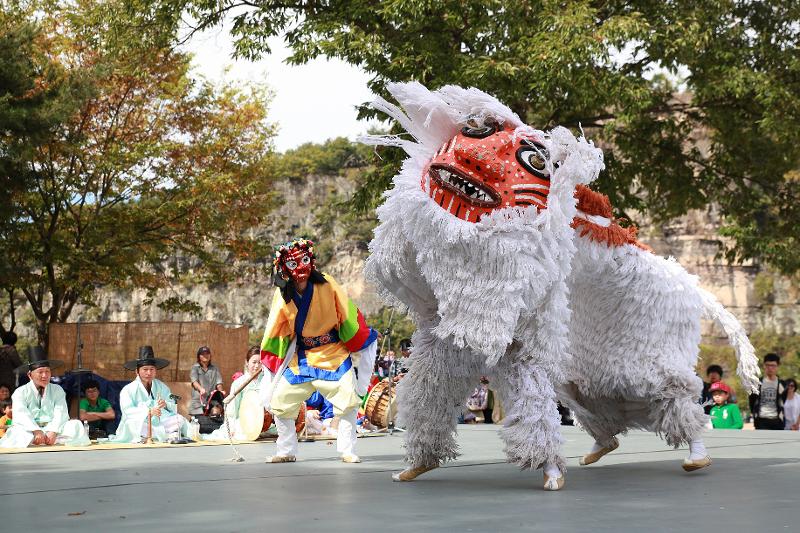
UNESCO's Intergovernmental Committee for the Safeguarding of the Intangible Cultural Heritage on Nov. 30 at its 17th meeting in Rabat, Morocco, designated the traditional Korean mask dance talchum as an Intangible Cultural Heritage of Humanity. Shown is a performance of Bongsan Talchum, which is designated National Intangible Cultural Heritage No. 17 by the Cultural Heritage Administration of Korea. (Cultural Heritage Administration)
By Yoo Yeon Gyeong
UNESCO's Intangible Cultural Heritage list has added the traditional mask dance talchum.
At its 17th meeting in Rabat, Morocco, the global cultural body's Intergovernmental Committee for the Safeguarding of the Intangible Cultural Heritage on Nov. 30 decided to inscribe talchum on the Representative List of the Intangible Cultural Heritage of Humanity.
The official name on the UNESCO list is "Talchum, Mask Dance Drama in the Republic of Korea."
The committee said the dance's emphasis of the values of universal equality and criticism of social hierarchy remain relevant and praised talchum for its symbolic role in each region's cultural identity.
The meeting discussed 46 candidates for the designation, and the committee picked talchum as an exemplary case that clearly describes the social function and cultural meaning of an intangible cultural heritage.
Talchum is a comprehensive art that encompasses dance, music and theater, a heritage of a pleasant community showing mutual respect while the performers share active cheers and jeers with the audience and criticize if needed in the pursuit of grand unity. The dance can be performed anywhere even without a stage and features interactions between performers and spectators.
The Cultural Heritage Administration (CHA) said, "This inscription is highly meaningful because talchum is considered a representative symbol of intangible heritage by Koreans since its designation as a National Intangible Cultural Heritage in the 1960s, when the intangible heritage system was adopted."
Korea now has 22 items on the Intangible Cultural Heritage list.
Beginning with Jongmyo jeryeak (royal ancestral ritual and music at the Jongmyo Shrine in Seoul) in 2001, Korea had 21 items listed before talchum such as pansori (solo lyrical opera), the Gangneung Danoje Festival, ganggangsullae (women's traditional circle dance), jultagi (tightrope walking), "Arirang" (lyrical folk song), culture of Jeju haenyeo (female divers), ssireum (traditional wrestling) and Yeondeunghoe (Lotus Lantern Festival).
President Yoon Suk Yeol on the same day sent a congratulatory message to 18 talchum preservation societies nationwide, saying, "The achievement of passing on talchum was thanks to the sweat and dedication of its successors despite difficult circumstances."
"I hope that this inscription is an opportunity for people around the world to share the Republic of Korea's indigenous traditional culture and spirit as well as to further enhance our cultural elegance."
dusrud21@korea.kr